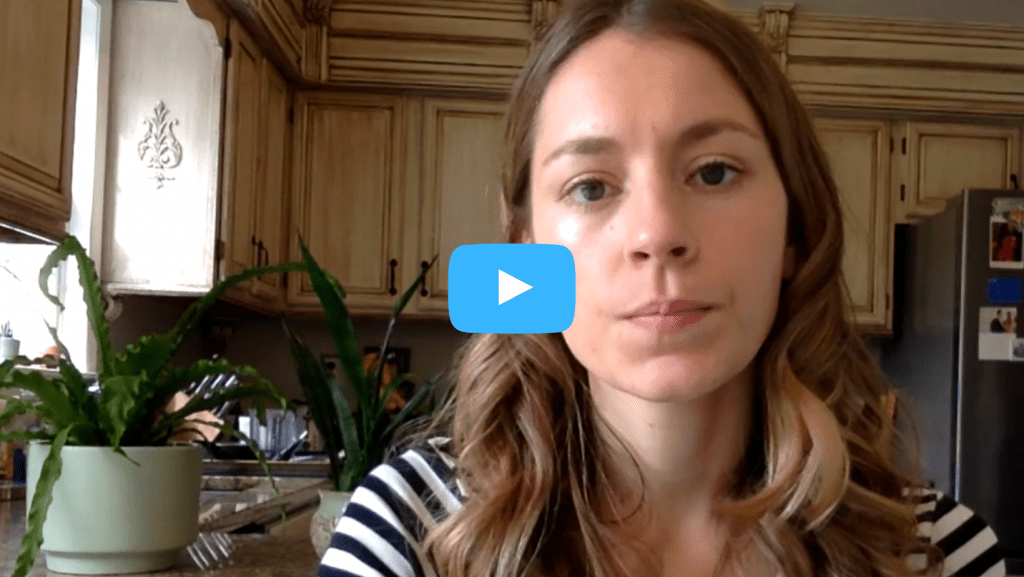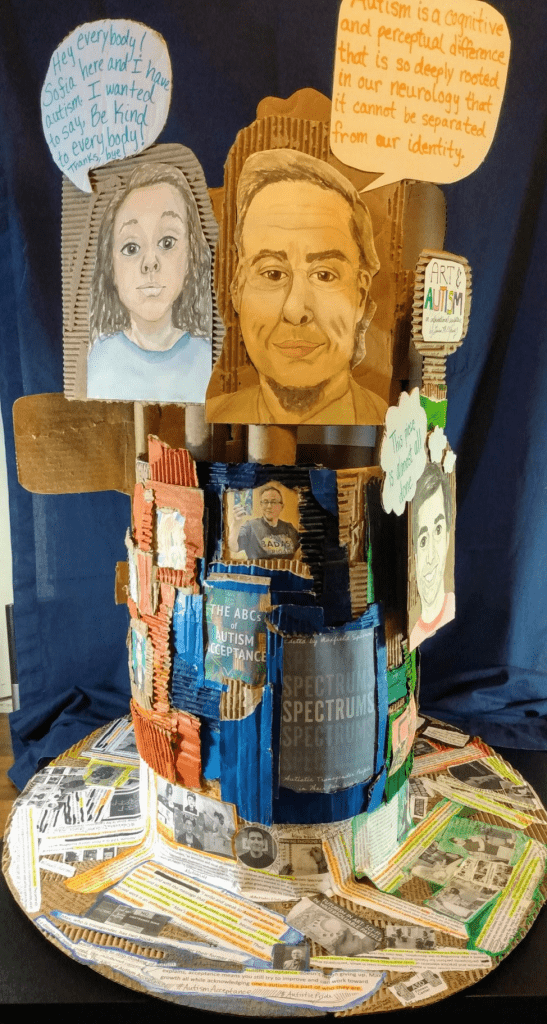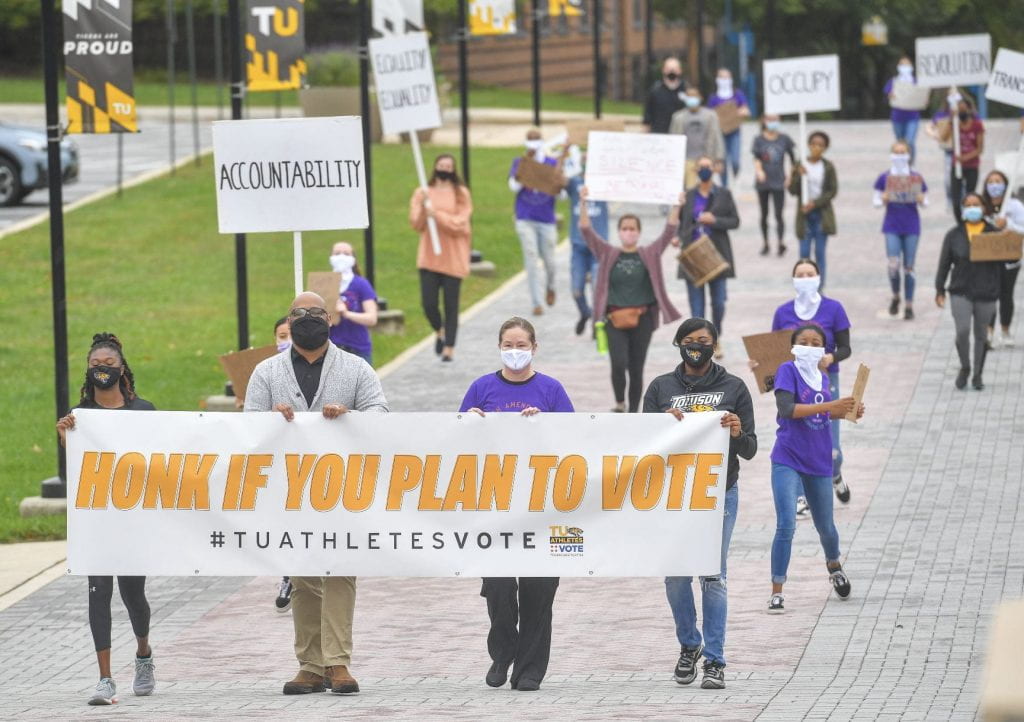
Art in Other Places is a special topics course I designed and teach for the students in the M.A. program in Interdisciplinary Arts Infusion (MAIAI). In this class, students look across all of the various art forms to explore the many ways in which artists and arts organizations are engaging with vulnerable and marginalized communities. In the home video below, you’ll see the original spoken word poetry of TU graduate student, Jess Kless, who is an elementary school music educator in Anne Arundel County, now in her final year of the MAIAI program. And with the still photos, you’ll see the work of MAIAI graduate assistant, Ana Maria Economou, a fantastic teaching artist who specializes in ceramics, now in her final semester of the MAIAI program. Each student takes a deep dive into researching one particular population. Jess chose to focus on chronically ill children in the hospital setting and Ana Maria chose to focus on undocumented immigrants. Typically in this course, students take all of the research they’ve collected over the course of a semester and create a visual art installation designed to create greater awareness and understanding for the population itself and also the artists who strive to meaningfully engage and support them.
This year, students had the added challenge of using a large corrugated cardboard box as their main source of material for a 2D or 3D work. The photos of Ana Maria’s project show how she took up this task so skillfully. She crafted a unique box with imagery and text both inside and out, but especially noteworthy is the central element, a beautiful mask that she made using paper pulp in a clay mold. She titled her work They Didn’t Know We Were Seeds.
The video reflects yet another stellar project from Jess Kless. To account for the fact that we have graduate students with interests and skills in both visual AND performing arts, I decided to shake things up this Fall and bring in a performative option for the final projects. Given how it is often touted for its healing and transformative potential, the whole class had been introduced to spoken word poetry with a fantastic local guest artist, poet, and MICA faculty, Unique Robinson. The COFAC Diversity and Inclusion committee graciously funded Unique’s contribution to our class. For the final project, 5 of the 16 enrolled students volunteered to work with Unique to write and perform a poem with their research in lieu of an art installation. Each student had two coaching sessions with Unique and under her tutelage, they created some truly moving works. Synthesizing collected research and then being cautious to not speak on behalf of a population for which they are outsiders was no easy task, but these students rose to the task. Jess Kless really wowed us with her creative work titled This Room. Take a look…

MORE STUDENT WORK…




About:
 Kate Collins joined Towson University and became Program Director for the new Master of Arts in Interdisciplinary Arts Infusion (MAIAI program) in August 2014. Prior to this position, Kate was at Ohio State University completing her doctorate in Arts Administration, Education and Policy. Her action-research dissertation focused on socially engaged arts and cultivating the civic imagination of student and youth artists. Read more
Kate Collins joined Towson University and became Program Director for the new Master of Arts in Interdisciplinary Arts Infusion (MAIAI program) in August 2014. Prior to this position, Kate was at Ohio State University completing her doctorate in Arts Administration, Education and Policy. Her action-research dissertation focused on socially engaged arts and cultivating the civic imagination of student and youth artists. Read more
Interdisciplinary Arts Infusion (M.A.) The Master of Arts in Interdisciplinary Arts Infusion (MAIAI) is a one-of-a-kind, graduate program designed for classroom teachers, arts specialists, teaching artists, administrators and arts entrepreneurs.
With all of the hardships and difficulties brought by the pandemic, I have to say that the work my grad students did on their final projects in the Fall semester was an absolute silver lining. These students are largely working teachers and teaching artists so they already had a lot on their plates, but even so, every one of them truly stepped up for a really challenging task and just shined!

 What initially was going to be nine dancers ended up being over thirty participants, two videographers, and one photographer. The participants were asked to create signage for the march and to consider what would be a platform they would march about. What would/do they stand up for? What cause do they value and want to add their voice? What issues would/do they vote for? It was an amazing gathering of folks across a spectrum, coming together for a common goal of common good.
What initially was going to be nine dancers ended up being over thirty participants, two videographers, and one photographer. The participants were asked to create signage for the march and to consider what would be a platform they would march about. What would/do they stand up for? What cause do they value and want to add their voice? What issues would/do they vote for? It was an amazing gathering of folks across a spectrum, coming together for a common goal of common good. 
